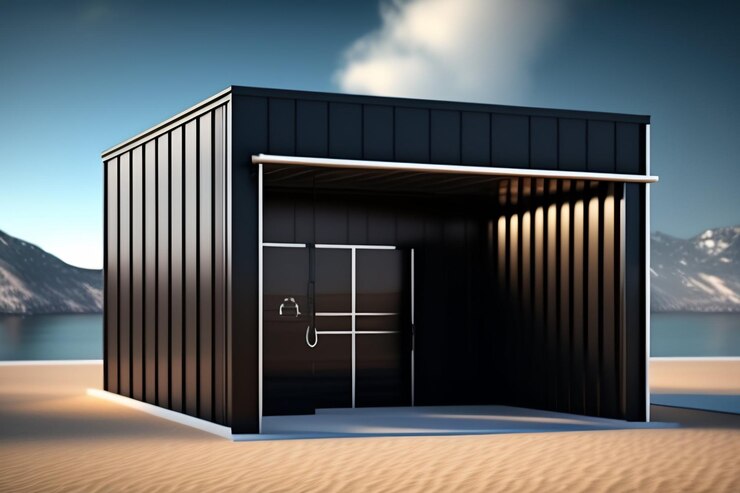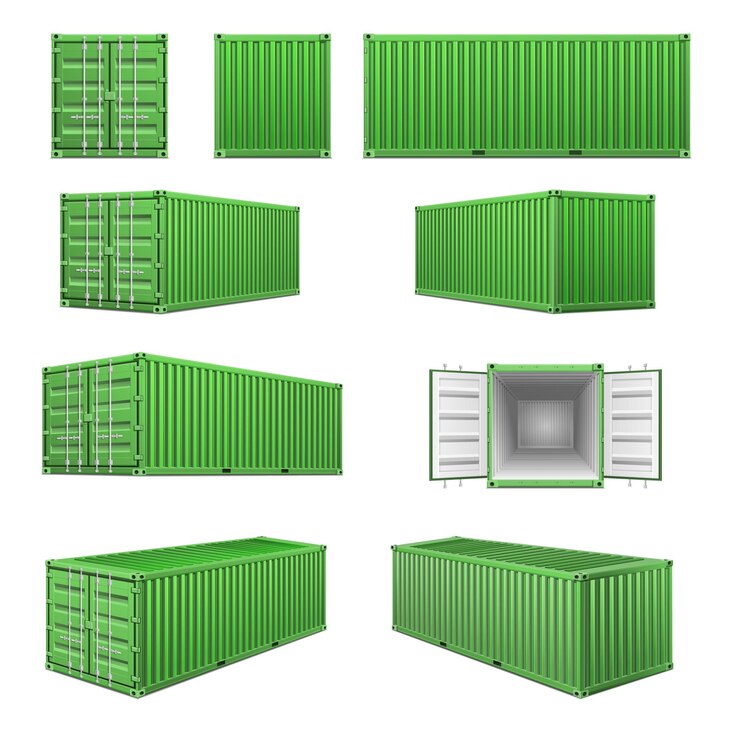The shipment containers popularly used for transporting items and goods worldwide are now used for creative designs to build genius in architectural view. The world of architecture is early with beautiful creations and genius of minds. They have been due to their stability and range in patterns. People have adjusted shipment containers from mere metal boxes into creative charms for offices, shops, urban places, swimming pools, and other moving designs. The reused trend has gained demand for purposes like afford and the eco-friendly nature of the container. Explore the creative use of shipping containers in architectural design.
Shipping container architecture
Shipping containers used in architectural design are made of steel, a durable material that tones the container enough to fit the harsh sea environment and extreme weather conditions. It makes the containers usable for transport through ships, trains, and trucks. Sizes such as 20 and 40 feet in length and 8 feet in width and height are available.
The shipment containers were introduced initially in the mid-20s for transporting purposes. The lifetime was minimal, and the containers were retired after the use of a few years. This made the containers reuse their plans for building architectural spaces. In the 1980s, when emergency houses were needed during natural disasters, shipping containers for businesses were used for building purposes. They are over and overused for addition in the architectural view, with many beautiful designs for urban homes, commercial buildings, and pop-up shops
Various advantages, including heart, are the following that make a shipping container transformed into addition and design.

1. Versatility:
Shipment containers for architectural grounds have gained fashion due to their utility. Which makes it a superior choice for the following purposes
Residential homes:
Shipping containers have created modern living spaces by building and progressing containers. These containers are cheap and eco-friendly, which makes them a solid choice.
Commercial buildings:
The give in architectural design has made them useable in places such as offices, restaurants, and schools, as it is handy to build custom spaces that meet the needs.
Emergency and disaster relief:
Shipping containers can easily be as medical clinics, houses for removed people, and storage containers for relief materials due to their advantage of mobility and portability.
Pop-up shops
Shipment containers are portable, installed efficiently, and molded into custom designs that reflect the brand and product’s ideology. Their convenience makes them utilized for small retail shops quickly.
Art installation
Artists widely use shipping containers used in architectural design to design various esthetic designs with light, color, and eye-catching art pieces. These artisans have challenged the traditional perceptions of art.
Swimming pools
They are cost-efficient and eco-friendly options for making swimming pools.
2. Adaptability and modularity
The shipment containers are available in sizes importance of 20 feet shipping container for different purposes or 40 feet long, resulting in efficient use in diversified stacking, arranging, and creating unique shapes and structures. This modularity in design enables easy organization into different configurations and layouts for innovative purposes.
3. Affordability with efficiency
Using shipping containers for dry storage purposes is cost-effective as it provides cheaper ways to construct places than traditional constructions. They are comparatively less expensive and decrease the construction time and labor cost. Furthermore, the containers are hard enough to withstand harsh conditions and possess strong framing bodies, so they are a good choice for construction places.
4. Sustainability and recycling
The shipment containers retire within a few years, enabling us to repurpose them for construction. Their utilization helps to recycle the material and limits waste. Another disposable feature of the container involves insulating it and converting it into an efficient system to create eco-friendly buildings, such as solar panels, rainwater harvesting systems, and other green technology buildings, in order to minimize the impact of global warming and ozone depletion.
Examples of some inspiring designs
The container city in London
This is an example of innovation. This project is in London, a multi-story building made of shipping containers. It reflects the vibrant and sustainable creation of architecture for communities within urban territories.
The Redondo Beach house
This container house in California has large glass windows that are airy and open. Its stunning design has transformed the container’s traditional use, which determines diversity in utilizing containers for luxurious and comfortable living spaces.
The nomadic museum
They constructed this exploring museum by stacking and orienting 148 shipping containers and exhibited it globally in multiple cities. It shows how containers can be versatile and serve as large-scale temporary structures for cultural exhibitions.
Container terminal in Amsterdam
Shipping containers are can-do and green. In Amsterdam, people use them as attractive architectural spaces for public events.
The 2022 FIFA World Cup stadium
The range in function made the container a choice for building a stadium in Qatar for the World Cup match. Arranging 974 shipping containers created it.
The puma city
It is an 11,000-square-foot pop-up shop only building shipment containers. The area includes retail space, a lounge area, and a bar. People stack all the containers together.
The beach box
A residential house consists of four containers. The design includes a rooftop with a deck, floor-to-ceiling windows, and an open living space.
The container guest house
It is a guest house ranging from 640 feet. Shipping containers make up its entire structure. The house includes a living room, kitchen, and bedroom in a single container.
The caterpillar house
A residential house consists of 12 shipping containers. The unique design is modern and spacious.
Considerations while after shipment of containers into architectural spaces
Constructing architectural designs with shipping containers, formerly used for shipping purposes, poses several challenges. The following are the measures to prevent loss and avoid mishaps during and after the construction.
- Solid covering to control climate and weather damages
- Navigating local methods with basic change and permits to follow the laws varies from region to location.

Conclusion
Architectural designers widely access shipment containers for reusing methods, and they use and recycle these containers with an architectural view, imbuing them with unique creative and design peace. Its portability, modularity, sustainability, strength, and eco-friendliness make it a solid choice for original techniques. The designs created by building and reusing containers into living and other attractive spaces have gained immense fashion due to their green nature and adaptability.


